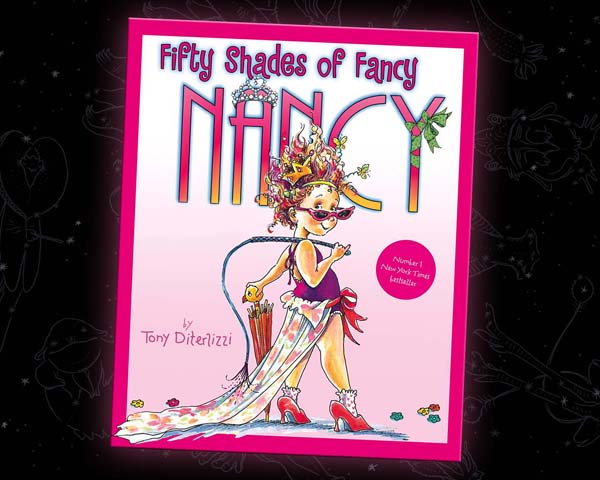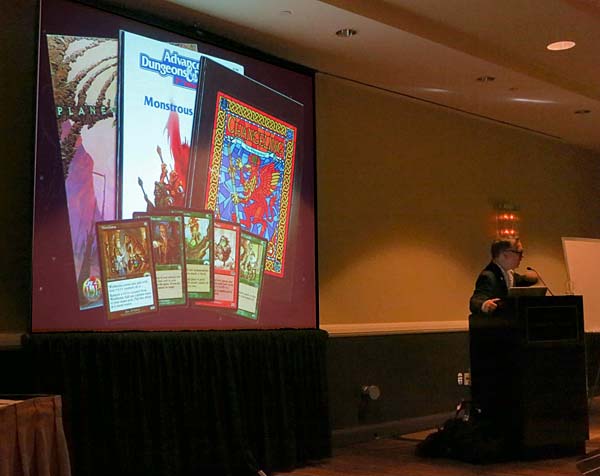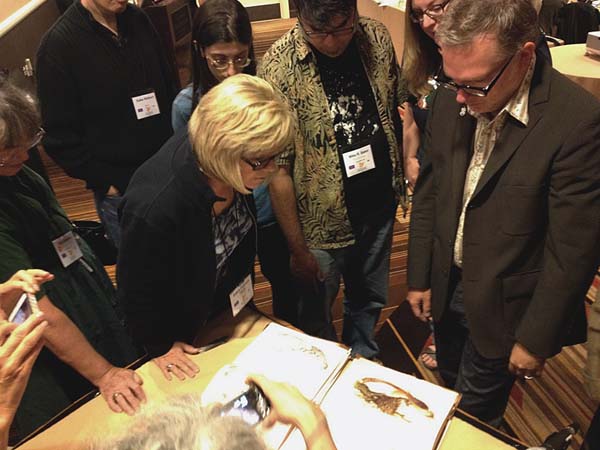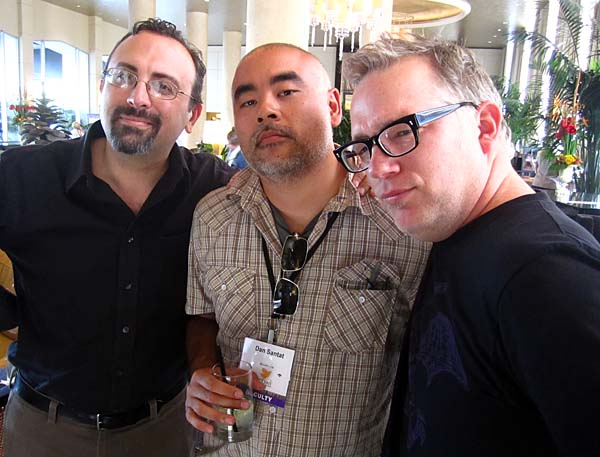Quite a Society
August 13, 2012
My mind is still awhirl from the Society of Children’s Book Writers & Illustrators (SCBWI for short) summer conference held in Los Angeles last weekend.

I joined an amazing faculty (comprised of award-winning authors, illustrators, editors, art directors and agents) to share knowledge and experience to aspiring kid’s lit creators. Over the course of 4 days I attended workshops, sessions, keynotes, reviews, parties and a massive book signing (with all faculty members signing at once). It was marvelous!

Above: with illustrator David Diaz and art director Cecilia Yung.
Don’t know what the SCBWI is? They are a non-profit organization devoted to encouraging and developing the next generation of children’s lit writers and illustrators. Founded in 1971, many of its members have gone onto win the prestigious awards of children’s publishing, like the Newbury and Caldecott. I have known of this organization for years and have steered many would-be illustrators in its direction, but I had not participated in any of their events prior to the gracious invite from Lin Oliver and David Diaz to the LA conference.

Did I mention the keynote presentations? I was asked to speak on day one, following the illustrious Arthur Levine (known by many as the editor of the Harry Potter books). Speaking in front of the 1200+ attendees I focused my speech less on how I create my books, but more on why I create my books – with a focus on the importance of imagination.
Now, I usually like to open with a bit of a laugh to get everybody in the right frame of mind. For this gathering, I spoofed some ideas I had been toying with for kid’s books, like dystopian tales for preschoolers:

…and Twilight for a new generation:

…not to mention evolving Fancy Nancy for the older crowd:

Thankfully, these went over well and I was off and running for my hour-long presentation.

The following day, I spoke to a room full of illustrators about the process of writing from a visual perspective. I broke the elements of writing down into art terms to help convey the steps in crafting a final manuscript. What surprised me was the amount of note-taking that went on while I spoke. I hadn’t really stopped and thought as to how much of my earned knowledge was coveted by these fellow artists. As I chatted with attendees, I was swept back in time to my own trials and tribulations of breaking into children’s publishing. How I would have loved to have the opportunity to listen to Chris Van Allsburg or William Joyce explain their process to me back then.

On Monday, I spoke more about bookmaking to a group of serious illustrators. This was part of the intensive programming that went on throughout the day. I sat in on many of these sessions but had to take frequent breaks as my poor brain was soon overloaded. (I honestly don’t know how the attendees could absorb anything more after three packed days of the conference – but again there was lots of note-taking.)

Above: Three-time Caldecott winner, Bryan Collier, and his editor, Laura Goodwin, discuss his humble beginnings
I emphasized the importance of working for game companies early in my career. The publications that I did for TSR taught me a whole lot about building a world from soup to nuts.

For fun, I brought bits of my past to show the group. I still had one of my submission portfolios, which I used to point out the flaws of my early work. I also brought along a sketch-covered manuscript and the book dummy for Arthur Spiderwick’s Field Guide to the Fantastical World Around You. All of these tactile components to my presentation seemed to go over well and I was glad to share them.

To say that the conference was amazing would be a gross understatement. If you are attempting to enter this field, I cannot express how invaluable this experience is. Learning from successful mentors (who had similar aspirations when they were getting started) not only galvanizes your drive but also shows that you are not alone in your dreams.

Above: Trying to appear serious with fellow faculty members, Dan Yaccarino and Dan Santat
*With thanks to fellow illustrators, Debbie Ridpath Ohi and Jill Bergman, for use of their additional photos.
Back to main news page

 Menu
Menu Connect
Connect

















